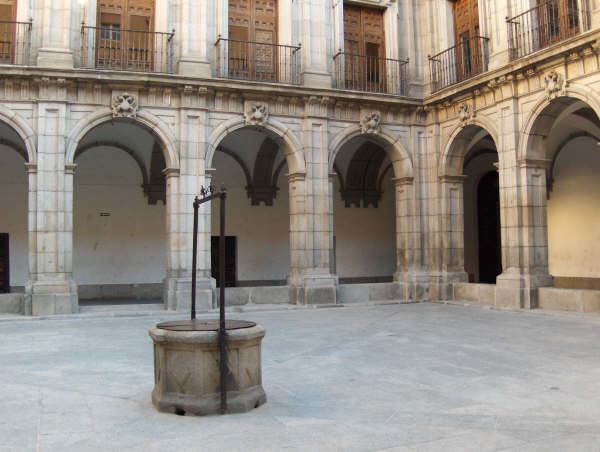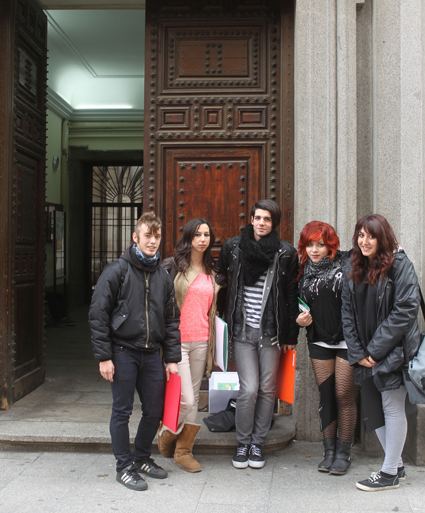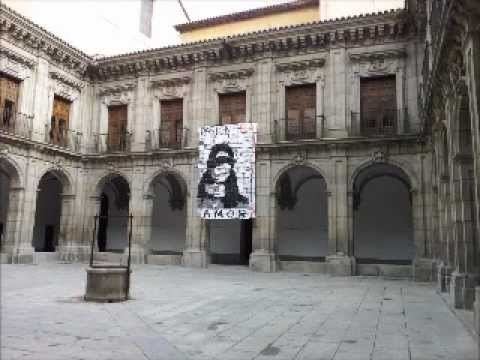Established 1346 Religion Roman Catholic Founder Alfonso XI of Castile | Type State-funded Founded 1346 | |
 | ||
Motto Latin: Iter, vultus duo
(One route, two views) Head Master Enrique de Avilés y Arroyo Director of Studies Rafael de Martín y Villa | ||
Instituto san isidro
The Instituto San Isidro /ˈsɑːniːsiːdroʊ/, formerly known as Colegio Imperial de la Compañía de Jesús (in English: The Imperial School of the Society of Jesus), often referred to as "San Isidro", is a co-educational day school for pupils from 12 to 18 years of age. It is located in the historical Calle de Toledo, in Madrid (Spain). Founded in 1346, it is the oldest functioning school in Spain and is amongst the oldest educational institutions in the world, ahead of Winchester College (1382), and therefore of any other English public school. Originally a boys' independent school, it turned coeducational and state-owned throughout the second half of the 20th century.
Contents
- Instituto san isidro
- 40 aniversario instituto san isidro
- History
- In the 20th century
- Heritage
- Notable alumni
- Notable staff
- References

San Isidro has educated eight Spanish prime ministers and generations of the European Catholic aristocracy, and was formerly referred to as the nanny of Spain's statesmen. With the discovery of the Americas, the school gained importance in educating young men that would later become a credit to the Spanish Empire. It is also the third school with the most Nobel Prizes in the world, having four laureates amongst its former pupils.

Many of the old pupils went on to fight in the Spanish Civil War, the great majority of them joining the Nationalist side, with around 203 being killed during the two year war period. In addition, 12 Old Franciscans from the Blue Division died fighting in the Eastern Front during World War II.

40 aniversario instituto san isidro
History

The foundation of the school can be attributed to the decision taken by the king Phillip II of Spain to move the Court to the city of Madrid and make it Spain's permanent capital, which occurred in 1561. Shortly before, the Jesuit Order already knew such measures due to some inside information that had been given to them by the duke of Feria in London. Given this news, Saint Francis Xavier, General of the Order at that time, believed necessary to establish a school in the future capital of the Kingdom. Being close to his majesty and the Court was always beneficial, considering that the new Court did not have its own educational infrastructure at the standards that it would acquire. Thus, in 1566 the Jesuits founded a small school in what would become, later on, the Plaza Mayor in Madrid.

Despite the benefits this would bring to Madrid, the City Council was unwilling to grant the required permission to open the school because the capital already had the "Villa Studies", under the council and founded in 1346 by a Royal Charter of king Alfonso XI of Castile. Hence, there was going to be a clear competition between both. However, it was the power of the Jesuits which led to the City Council giving its consent. A few years later, the actual "Villa Studies" would be absorbed by the College of the Jesuits.

In the early XVII century, with the death of Mary of Austria and Portugal in 1603, the school becomes increasingly important thanks to her will in favor of the Jesuit school. However, it was not until 1609 that the College acquires the title of "Imperial" due to disputes there existed with the successors of the Empress because of that heritage, claiming Mary of Austria should be proclaimed as benefactress and patroness of the college. From then onwards, the school became known as the "Imperial College of the Society of Jesus".
The college gained fame and importance so that the very same Crown desired to intervene in this phenomenon not to miss the moment that could give them prestige and greater popular support, especially since the author of this intervention, the Count-duke of Olivares, was quite an unpopular character. The Count-duke's plan was to turn the college into a university. Madrid, to regain the title of capital, had grown in importance and needed to have studies at university level, to not depend on the neighboring University of Alcalá and University of Salamanca.
It was during this time that universities became more important. The cities that harbored these institutions quickly saw themselves enriched in every way thanks to businesses that appeared around them. San Isidro had also "popularized" and the nobility had understood what it meant to have university graduates in their families; being thus the reason why they sent their children to these higher educational institutions.
It is because of all the above, that the Universities of Salamanca and Alcalá were led to fight against the creation of a new university in Madrid, where the school was, from which most of their students came. Their struggle had been so hard that, finally, they successfully got Philip IV to found a "Royal Studies" in 1625, but depriving the right to grant official titles and lowering its annual budget. Furthermore, many students began their studies at San Isidro, but would then leave to universities for their higher studies; such as Lope de Vega and Quevedo among others.
In 1725, Philip V, founded the Imperial College (an imitation of the College of Louis le Grand in Paris), where a small number of nobles could learn all the way from the alphabet, to Classical and Modern languages, Religion, Philosophy, Law or Science.
In the 20th century
With the Spanish Civil War, much of the school's cloister was destroyed, and, like the rest of the education in Spain, entered a period of misery.
The college remained the same until the end of the 1960s, when there was a reform that would end with the old classrooms and the construction of a new building, conserving the old facade, the cloister, and the staircase. The lack of admiration and respect for the history of the ancient school had not yet been developed and led to part of the heritage treasured inside it to eventually be destroyed.
The arrival of the new education law after Franco's regime marked a radical change, from which thereafter the school would face new and unfamiliar problems. After some difficulties, the college was incorporated to the teaching of new technologies and languages, without neglecting its classical education. Also, the school opened its doors for the first time to girls, and became owned and run by the state.
Heritage
The current building includes: the baroque cloister (1672), a baroque staircase and an elegant chapel (1723) amongst other ancient works of art. It is on the stairs where a small museum is situated and dedicated to Science and education.
Designed by Ventura de la Vega, the ancient library still has important and relevant books in its interior, which is located on the top floor and has been renovated.
The school also has a museum on the ground floor, recreating a School class, dozens of stuffed animals and four floors of multiple interest.
Notable alumni
Former pupils of San Isidro are known as Old Franciscans, in memory of the re-establisher, Saint Francis Xavier.
The school has educated a wide range of historical figures including 8 Spanish prime ministers as well as four Nobel Prize laureates.
